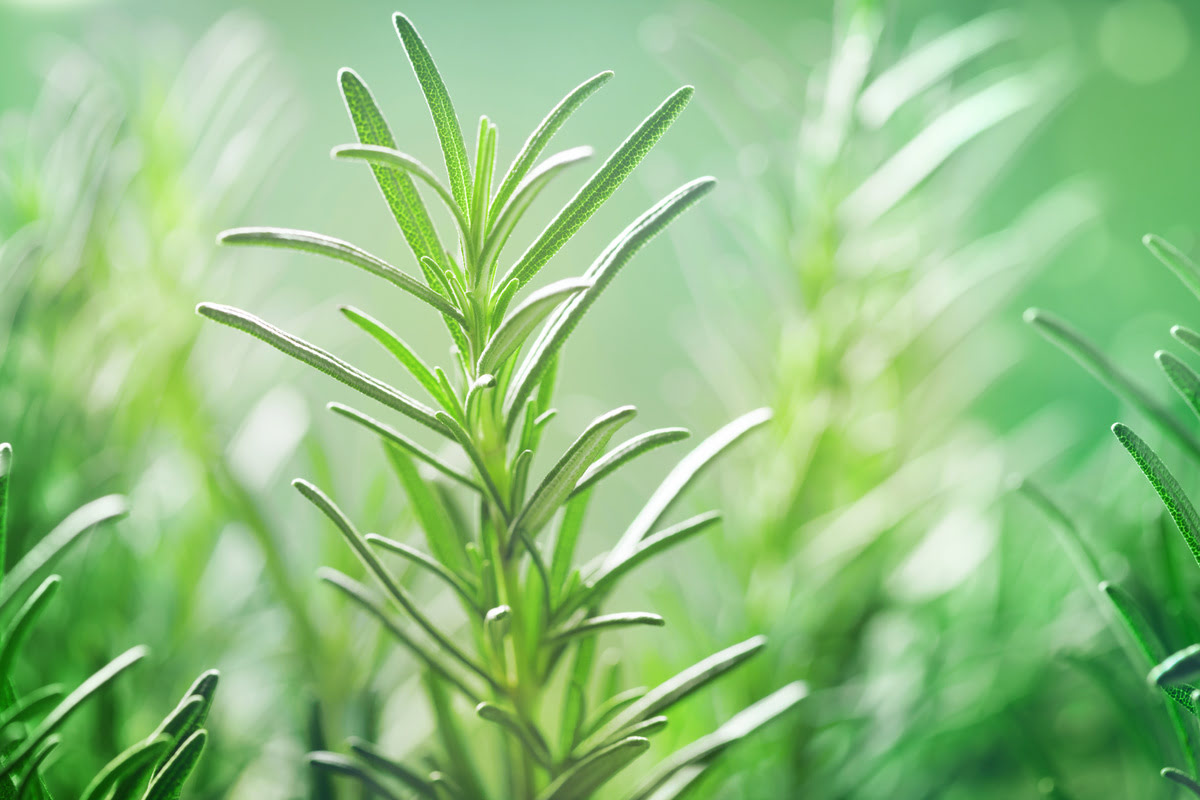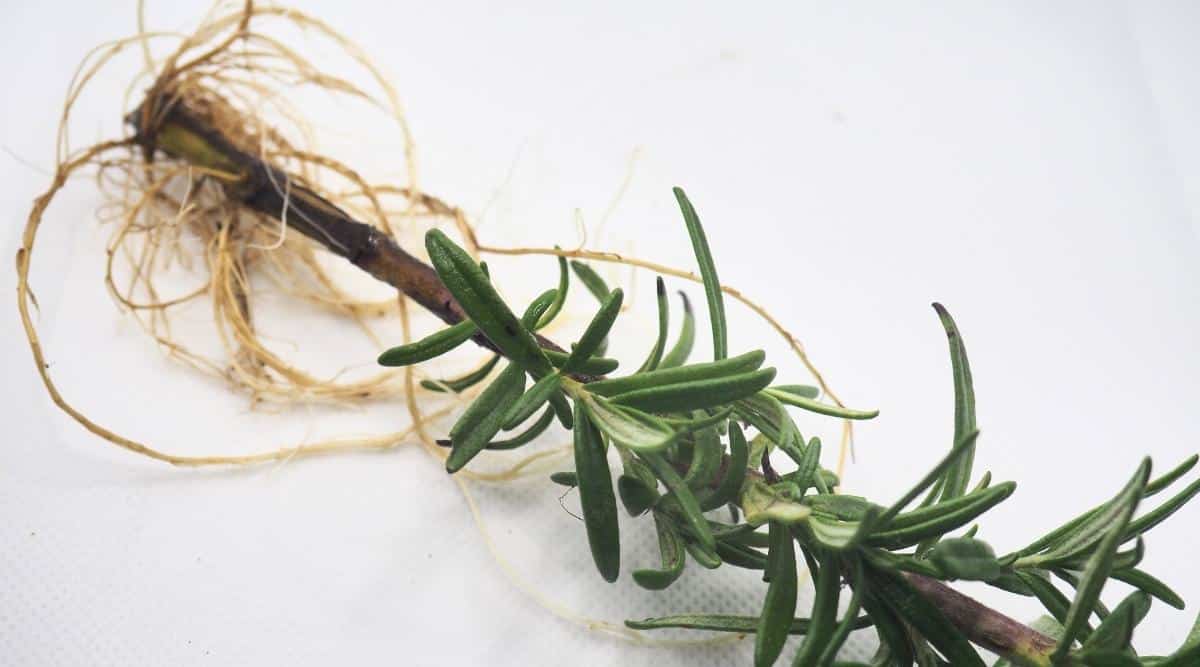Home>Types of Gardening>Edible Gardening>When Do You Plant Rosemary?


Edible Gardening
When Do You Plant Rosemary?
Published: January 29, 2024
Learn the best time to plant rosemary for your edible garden. Discover tips and techniques for successful rosemary planting in our guide to edible gardening.
(Many of the links in this article redirect to a specific reviewed product. Your purchase of these products through affiliate links helps to generate commission for Chicagolandgardening.com, at no extra cost. Learn more)
Table of Contents
Introduction
Edible gardening is a rewarding and eco-friendly hobby that allows you to grow your own delicious food at home. Whether you have a large backyard or a small balcony, there are plenty of plants that can thrive in a home garden setting. One such plant is rosemary, a versatile herb that adds a burst of flavor to culinary dishes.
Rosemary (Rosmarinus officinalis) is an evergreen herb that belongs to the mint family. It is native to the Mediterranean region, where it has been cultivated for centuries for its aromatic leaves and medicinal properties. In addition to its culinary uses, rosemary is also valued for its ornamental value, with its vibrant blue flowers and needle-like foliage adding beauty to the garden.
If you’re contemplating growing rosemary in your edible garden, it’s essential to understand the optimal conditions for its growth. From choosing the right variety to providing the ideal environment, every step matters in ensuring a healthy and thriving rosemary plant.
In this article, we will explore the best time of the year to plant rosemary and the factors you need to consider before diving into the planting process. We will also provide a step-by-step guide to help you effectively plant and care for your rosemary plants.
So, if you’re ready to roll up your sleeves and get your hands dirty, let’s dive into the world of rosemary gardening and learn when you should plant this fantastic herb!
Understanding the Growth Requirements of Rosemary
Before planting rosemary, it’s important to familiarize yourself with its growth requirements. By understanding the conditions that rosemary prefers, you can ensure that your plants will thrive and produce abundant harvests.
First and foremost, rosemary loves sunshine. This herb thrives in full sun, so it’s best to choose a location in your garden that receives at least 6 to 8 hours of direct sunlight every day. Lack of sunlight can lead to leggy and weak plants, so make sure to provide them with ample sunshine.
In terms of soil, rosemary prefers well-draining soil with a pH level between 6 and 7.5. It doesn’t tolerate overly wet or waterlogged soil, as this can cause root rot. To improve drainage, you can amend the soil with organic matter like compost or perlite. Additionally, rosemary is tolerant of poor soil conditions, making it a great choice for gardens with less fertile soil.
Another important consideration is water requirements. While rosemary is drought-tolerant, it still needs some watering to establish its roots. Once established, rosemary prefers to be on the drier side. Overwatering can lead to root rot and other diseases. It’s best to allow the soil to dry out between waterings and only water when the top inch of soil feels dry to the touch.
Furthermore, rosemary is a Mediterranean herb, so it is well-adapted to warm climates. It can tolerate temperatures as low as 10°F (-12°C) but prefers temperatures between 70°F and 80°F (21°C and 27°C). If you live in a region with harsh winters, it’s a good idea to protect your rosemary plants from frost by covering them or moving them indoors during the colder months.
Lastly, rosemary benefits from periodic pruning. Regular trimming will not only help shape the plant but also promote bushier growth. It’s recommended to prune in the spring or early summer after the plant has finished flowering. Be sure to remove any dead or damaged branches as well.
By understanding these growth requirements, you can provide the optimal conditions for your rosemary plants, ensuring their health and productivity. With this knowledge in hand, let’s move on to when you should plant rosemary in your garden.
Best Time of the Year to Plant Rosemary
Choosing the right time to plant rosemary is essential to ensure its successful establishment and growth. While rosemary can be planted year-round in mild climates, it’s generally recommended to plant it in the spring or early fall.
In warmer regions, where the winters are mild, spring is the ideal time to plant rosemary. This allows the plants to establish their root systems before the hot summer months. By planting in the spring, you give your rosemary plants a head start, allowing them to grow and thrive during the growing season.
In cooler regions, where the winters are harsh, it’s best to wait until the danger of frost has passed before planting rosemary. Planting in early fall allows the plants to take root and establish themselves before the arrival of winter. It gives them enough time to strengthen their root systems and get prepared for the colder months.
It’s important to note that rosemary is a perennial herb, meaning it can live for several years under the right conditions. By giving your rosemary plants a good start during the optimal planting time, you increase their chances of survival and longevity.
However, if you live in a region with a short growing season or severe winters, you can still enjoy fresh rosemary by planting it in containers. This way, you can bring the plants indoors during the cold months, ensuring their survival and continued growth.
Regardless of the time of year, it’s crucial to choose healthy and vigorous rosemary seedlings or potted plants from a reputable nursery or garden center. Look for plants with sturdy stems, vibrant green leaves, and no signs of pests or diseases. Healthy plants have a better chance of thriving in your garden.
In the next section, we will explore the factors you need to consider before planting rosemary in your garden. These factors will help you create the perfect environment for your rosemary plants to flourish and provide you with a bountiful harvest.
Factors to Consider Before Planting Rosemary
Before you dive into planting rosemary in your garden, there are a few important factors to consider. By taking these factors into account, you can ensure that your rosemary plants have the best possible chance of thriving and producing abundant harvests.
One crucial factor to consider is the location of your garden. As mentioned earlier, rosemary loves full sun, so it’s important to choose a spot that receives at least 6 to 8 hours of direct sunlight every day. If your garden is shaded or receives limited sun, consider planting rosemary in containers that can be moved to sunny spots throughout the day.
Soil quality is another significant factor. Rosemary thrives in well-draining soil with a pH level between 6 and 7.5. If your soil is heavy and retains water, consider amending it with organic matter like compost or sand to improve drainage. If your soil is highly acidic, you may need to adjust the pH level by adding lime to make it more suitable for rosemary.
Additionally, consider the space available for your rosemary plants to grow. Rosemary can reach a height of 2 to 4 feet (60 to 120 cm) and spread up to 4 feet (120 cm) wide. Make sure to provide enough room for each plant to grow without overcrowding, as overcrowding can lead to poor air circulation and increased risk of disease.
It’s also important to consider the climate in your region. While rosemary is generally a hardy herb, extreme cold temperatures can cause damage or even kill the plants. If you live in an area with severe winters, consider planting rosemary in containers so you can bring them indoors during the cold months, protecting them from frost.
Furthermore, consider the companion plants you want to grow alongside your rosemary. Rosemary is known to repel certain pests, making it a great companion for vegetables like cabbage, beans, carrots, and broccoli. On the other hand, it’s not recommended to plant rosemary near cucumbers or fennel, as they can inhibit each other’s growth.
Lastly, consider the maintenance and care required for rosemary. While it is relatively low-maintenance, rosemary still requires regular watering, pruning, and occasional fertilization. Make sure you can commit to these tasks to ensure the long-term health and productivity of your rosemary plants.
By considering these factors before planting rosemary, you can create the perfect environment for your plants to thrive. In the next section, we will provide a step-by-step guide on how to plant rosemary in your garden, so stay tuned!
Steps to Planting Rosemary
Now that you have considered the necessary factors, it’s time to get your hands dirty and plant your rosemary. Follow these simple steps to ensure a successful planting process:
1. Choose the Right Location: Select a sunny spot in your garden that receives at least 6 to 8 hours of direct sunlight. Ensure that the soil is well-draining and has a pH level between 6 and 7.5.
2. Prepare the Soil: Before planting, amend the soil with organic matter such as compost or sand to improve drainage. If needed, adjust the soil pH level by adding lime to create a more suitable environment for your rosemary plants.
3. Dig the Hole: Dig a hole that is slightly larger than the root ball of your rosemary plant. Ensure that the hole is deep enough so that the top of the root ball is level with the surrounding soil.
4. Plant the Rosemary: Carefully remove the rosemary plant from its container and gently loosen the roots. Place the plant in the hole and backfill with soil, firming it gently around the plant to eliminate any air pockets.
5. Space the Plants: If you are planting multiple rosemary plants, make sure to space them at least 2 to 3 feet apart to allow for proper air circulation and growth.
6. Water Thoroughly: After planting, give your rosemary plants a thorough watering to help settle the soil. Ensure that the soil is moist but not waterlogged, as rosemary prefers slightly drier conditions.
7. Mulch the Soil: Apply a layer of organic mulch around the base of the plants to help retain moisture and suppress weed growth. Make sure to leave a small space around the stem to prevent fungal diseases.
8. Provide Support (Optional): If you live in a region with strong winds or heavy rainfall, consider providing support for your rosemary plants by placing stakes or using a trellis. This will help protect the plants from damage and keep them upright.
9. Regular Watering and Maintenance: Water your rosemary plants regularly, allowing the soil to dry out slightly between waterings. Avoid overwatering, as this can lead to root rot. Prune the plants regularly to promote bushier growth and shape them according to your preference.
By following these steps, you can effectively plant and establish your rosemary plants in your garden. Remember to provide the necessary care and maintenance to ensure their long-term health and productivity. Now, you’re well on your way to enjoying the culinary and aromatic delights of fresh rosemary in your kitchen!
Caring for Newly Planted Rosemary
Once you have planted your rosemary, it’s important to provide the necessary care to support their growth and ensure their well-being. Here are some essential care tips for newly planted rosemary:
1. Watering: Right after planting, give your rosemary a thorough watering to help settle the soil. Afterward, water the plants regularly, allowing the top inch of soil to dry out between waterings. Rosemary is drought-tolerant, so it’s better to slightly underwater than overwater. Overwatering can lead to root rot and other diseases, so it’s important to find the right balance.
2. Mulching: Apply a layer of organic mulch around the base of your rosemary plants. Mulching helps retain moisture in the soil, suppresses weed growth, and regulates soil temperature. Keep the mulch about an inch away from the stems to prevent rot and keep the plants healthy.
3. Fertilization: Rosemary generally doesn’t require heavy fertilization. However, you can apply a balanced organic fertilizer in early spring to give the plants a boost. Avoid using high-nitrogen fertilizers, as they can promote excessive foliage growth at the expense of essential oil production.
4. Pruning: Regular pruning is beneficial for rosemary plants, especially during the first year after planting. In spring or early summer, once your rosemary has finished flowering, trim back any dead or damaged branches. Pruning encourages bushier growth, improves air circulation, and helps maintain the desired shape of the plant.
5. Pest and Disease Control: Rosemary is generally resistant to pests and diseases. However, keep an eye out for common issues such as aphids, spider mites, and powdery mildew. Regularly inspect your plants and take appropriate action if you notice any signs of infestation or disease. In many cases, a strong stream of water or insecticidal soap can help resolve pest problems.
6. Cold Protection: If you live in an area with harsh winters, consider providing some protection to your rosemary plants during the colder months. Covering them with burlap or bringing them indoors to a cool but bright location can help prevent frost damage. Remember to remove covers during the day to allow air circulation.
7. Harvesting: Once your rosemary plants have grown sufficiently, you can start harvesting the flavorful leaves. Take care not to harvest more than a third of the plant at once to ensure its continued health and growth. Harvesting can be done throughout the year, but the flavor is most intense just before the plant blooms.
By giving your newly planted rosemary plants the care and attention they need, you can ensure their healthy growth and increase your chances of a bountiful harvest. With time, your rosemary plants will establish themselves and become a thriving and aromatic addition to your garden. Enjoy the culinary delights that fresh rosemary brings to your meals!
Conclusion
Growing rosemary in your edible garden can be a rewarding and enjoyable experience. By understanding the growth requirements of rosemary and carefully choosing the right time to plant, you can create an optimal environment for these wonderful herb plants to thrive.
Remember, rosemary loves full sun, well-draining soil, and slightly drier conditions. By providing these conditions, along with regular watering, occasional fertilization, and proper pruning, your rosemary plants will reward you with aromatic leaves that enhance the flavors of your culinary creations.
Before planting rosemary, consider the factors such as the location, soil quality, climate, and companion plants. These factors will contribute to the success of your rosemary planting endeavor and ensure the health and productivity of your plants.
Once you have taken these factors into account, follow the step-by-step planting guide to establish your rosemary plants in the garden. Provide them with the necessary care, including watering, mulching, and pruning, to support their growth and longevity.
As your newly planted rosemary grows and matures, you can enjoy the pleasure of harvesting fresh aromatic leaves that will infuse your dishes with delightful flavors. Remember to harvest responsibly, allowing the plants to continue thriving.
Whether you choose to use rosemary in savory dishes, as an aromatic addition to homemade bath and beauty products, or simply for its attractive foliage in your garden, this versatile herb is a fantastic addition to any edible garden.
So, get started on your rosemary gardening journey, and soon you’ll be enjoying the delightful aroma and flavors of this versatile herb. With a little care and attention, your rosemary plants will flourish, adding beauty and flavor to your garden and culinary creations for years to come.






